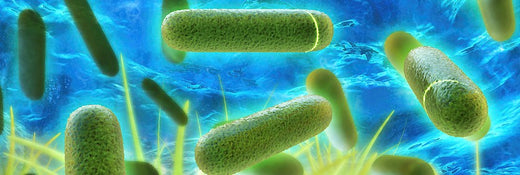
Legionella in drinking water
|
|
Time to read 2 min
|
|
Time to read 2 min
Legionella is an issue that concerns every homeowner, landlord and manager of public facilities, as it can lead to serious health problems. It is noticeable that this topic is often discussed incorrectly from a technical point of view. Contrary to the assumption that drinking water contaminated with legionella leads to so-called legionnaires' disease, it is clear that this only happens when the water is sprayed and this mist is inhaled. The classic example of this is the shower. Legionnaires' disease manifests itself with symptoms reminiscent of the flu. In people with a weak immune system - such as the elderly or children - the disease encourages the development of pneumonia, which in some cases leads to death. An estimated 2,000 people die in Germany every year as a result of Legionnaires' disease. It is difficult to compile reliable statistics on the number of people infected, as the symptoms are very similar to those of flu and the disease rarely develops into pneumonia.
COSTLY LEGIONELLA CONTROL BY INCREASING THE WATER TEMPERATURE
Since the end of 2011, there has been an amendment to the Drinking Water Ordinance regarding legionella. This stipulates that landlords must carry out a legionella test every three years and therefore take care of legionella protection themselves. After the first legionella tests, some tenants were banned from showering in their own home by the health authorities. A first, quick and short-term option is to heat the temperature of the hot water circuit to over 60°C. Although this can counteract legionella, there is still thermal uncertainty as to whether the water has actually been heated to 60°C. There is also the question of whether seals, fittings and pipes have really been disinfected. In addition to these uncertainties, this type of disinfection is cost-intensive, unsustainable and poses a considerable problem for tenants, as they can be scalded by water heated to 60°C. This option is particularly cost-intensive for users of a solar system, as the water, which was heated to 40-50°C using solar energy, now has to be heated to over 60°C using additional electricity. Legionella are also relatively well protected against chemical disinfectants, meaning that the dose required to kill them far exceeds the permitted limits.
UV-C DISINFECTION AS RELIABLE PROTECTION AGAINST LEGIONELLA
The many uncertainties in the health, legal and technical fields call for a different, quick and long-term solution. This is precisely where the strengths of a UV-C disinfection system lie. The targeted use of light in the UV-C range makes it possible to safely kill legionella - without thermal uncertainty and the risk of scalding. Legionella disinfection takes place directly in the hot water circuit. The water circulates continuously through the UV-C system, thus reliably avoiding the risk of Legionnaires' disease. These systems are not only suitable for both single-family homes and large residential complexes due to their high performance, but also require little maintenance and are completely environmentally friendly. This makes showering fun again.